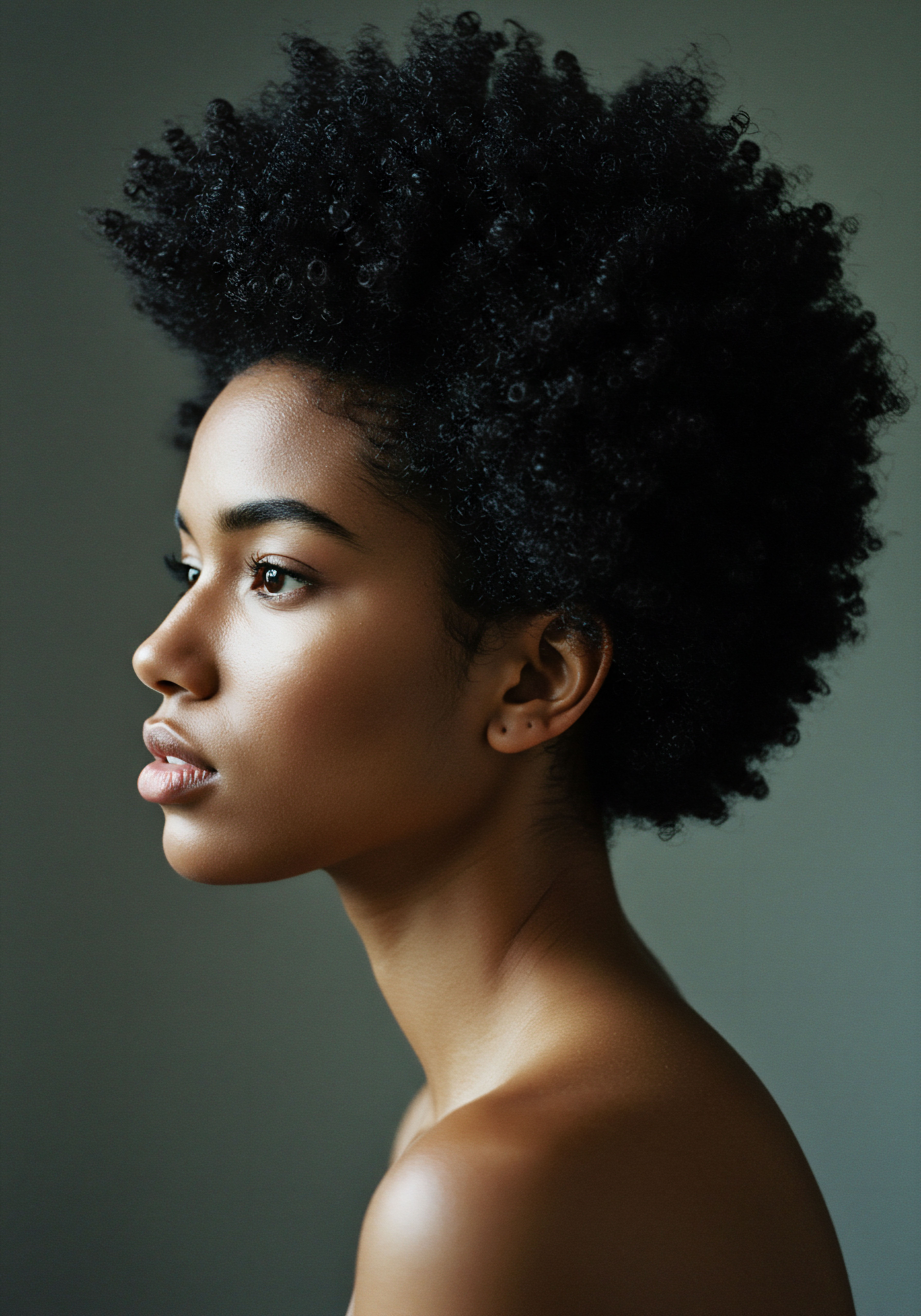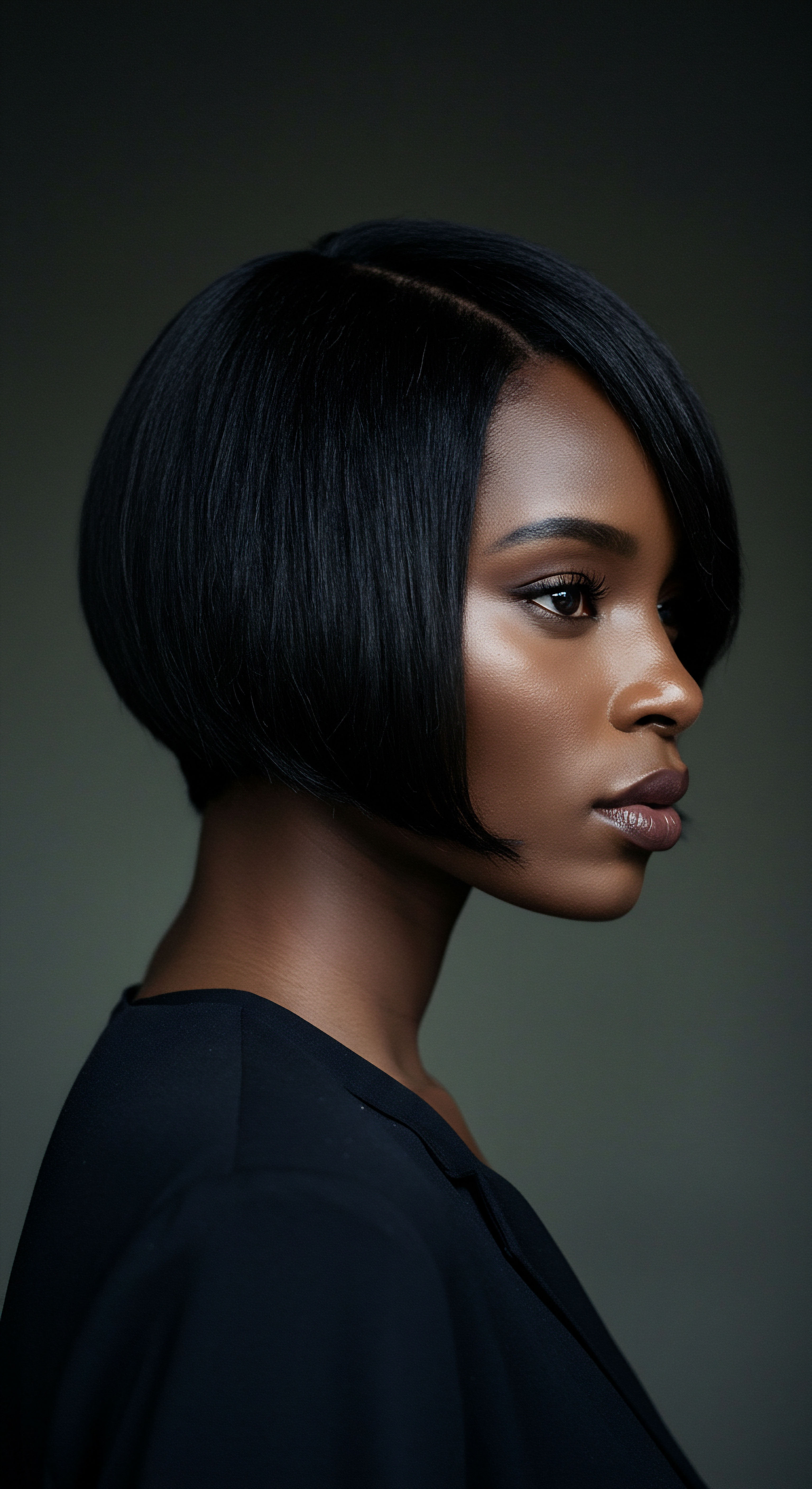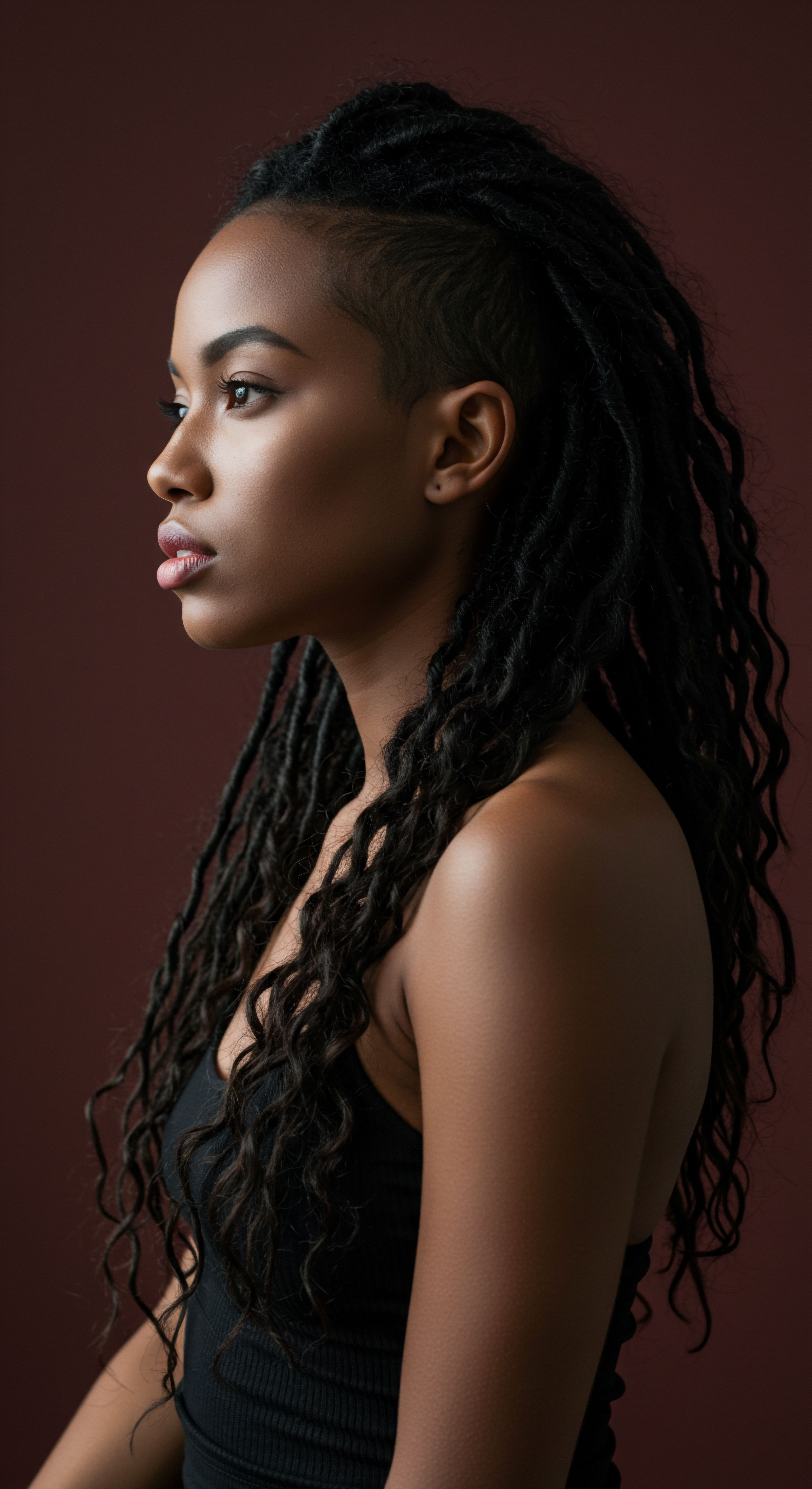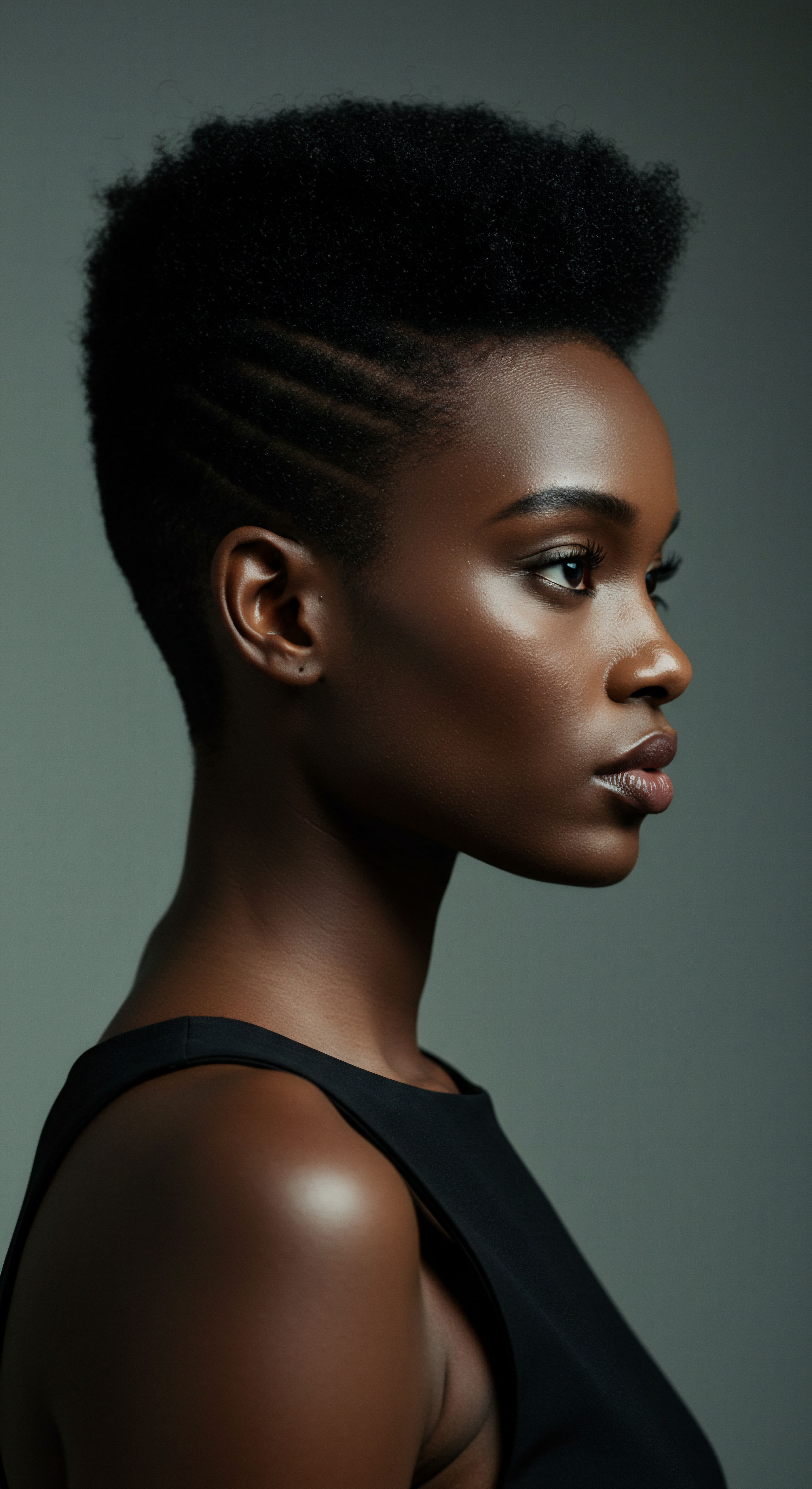
Roots
Before the era of sleek bottles and complex chemical compounds, our ancestors held a profound understanding of hair, seeing it not merely as adornment but as a vital expression of self, culture, and well-being. This ancient wisdom, often passed down through generations, reveals a tapestry of methods that sustained scalp and strand vitality. It speaks to a time when remedies sprung directly from the earth, when a deeper connection to nature guided every act of care. We invite you to step into this quiet, knowing space, where the whispers of history offer lessons for our textured strands today.

Ancient Civilizations and Their Hair Care Foundations
Across the globe, early societies laid down foundational principles for hair health, often viewing hair as a conduit for spiritual energy or a marker of social standing. From the fertile crescent to the Nile’s banks, and across vast continents, people intuitively grasped that healthy hair begins with a nourished scalp. They did not possess our microscopes or our laboratories, yet their observations and applications yielded remarkable results.

What Ancient Cultures Knew About Hair Anatomy?
While the detailed scientific understanding of the hair follicle as we know it today was absent, ancient cultures held an intuitive, functional understanding. They recognized the scalp as the soil from which hair grew, understanding that a healthy scalp was paramount for strong, lustrous strands. This is evident in their practices of regular scalp massage and the application of nourishing oils and herbal infusions. The Egyptians, for example, understood the importance of the scalp for preventing hair loss and encouraging growth, employing oils and aromatic herbs to feed the skin and invigorate the senses.
Similarly, Traditional Chinese Medicine (TCM) perceived the scalp as a hub of energy pathways, believing that stimulating these points could promote the flow of vital energy, thus benefiting hair health. This recognition of the scalp as a living, breathing entity, deeply connected to overall bodily well-being, formed the bedrock of their hair care philosophies.
Ancient cultures, without modern scientific tools, intuitively understood the scalp as the fundamental source of hair health, guiding their practices toward its nourishment.

The Essential Lexicon of Early Hair Care
The language of ancient hair care, while lacking the precise chemical terms of our modern age, was rich with descriptive words that conveyed deep understanding of ingredients and their effects. Terms like “balm,” “salve,” “tonic,” and “elixir” permeated their practices, each carrying a promise of restoration, strength, or vibrancy. These were not mere cosmetic labels; they denoted specific preparations aimed at addressing conditions such as dryness, breakage, or thinning.
- Oils ❉ Often derived from plants like castor, olive, coconut, or argan, these were fundamental for moisturizing, protecting, and strengthening hair.
- Herbal Infusions ❉ Preparations made by steeping herbs like rosemary, nettle, chamomile, or fenugreek in water, used for cleansing, rinsing, and adding shine.
- Clays and Earths ❉ Utilized for cleansing and purifying the scalp, drawing out impurities without stripping natural oils.

Hair Growth Cycles and Influencing Factors in Historical Context
While the modern scientific classification of anagen, catagen, and telogen phases of hair growth is a relatively recent development, historical observations noted patterns of hair shedding and regrowth. They linked these cycles to various internal and external factors, including diet, stress, and environmental conditions. For instance, Ayurvedic medicine recognized that diet and lifestyle directly influence hair health, advocating for balanced nutrition and stress-reducing practices to support healthy hair growth.
Periods of famine or hardship would likely have been observed to correspond with changes in hair density or quality, underscoring the connection between overall health and the vitality of one’s strands. The idea that hair could reflect internal balance or imbalance was a guiding principle in many traditional healing systems.

Ritual
The daily or weekly rhythms of caring for our hair hold a unique power, extending beyond mere hygiene to become acts of self-connection and heritage. These practices, when viewed through the lens of history, reveal themselves as deliberate, often therapeutic rituals designed to support the very foundation of our strands. As we step into this space, let us consider the wisdom of those who came before us, whose hands-on methods provided tangible benefits for scalp and hair. This section delves into the applied knowledge of the past, offering insights into techniques and tools that continue to resonate with our modern understanding of hair wellness.

Protective Styling Through the Ages
Long before the term “protective styling” entered our contemporary lexicon, ancient cultures instinctively understood the necessity of safeguarding their hair from environmental aggressors and daily wear. These styles were not solely aesthetic; they served a crucial function in preserving length, minimizing breakage, and maintaining scalp health. From elaborate braids to wrapped styles, these methods were born of practical wisdom and a deep respect for hair’s delicate nature.

How Did Ancient Cultures Protect Their Hair from Damage?
Ancient civilizations developed diverse and ingenious methods to protect their hair, many of which align with modern protective styling principles. For instance, in West African traditions, oils and butters were regularly applied to hair to seal in moisture, particularly in hot, dry climates. These emollients were often paired with protective styles like braids, twists, and wraps, which shielded the hair from sun, dust, and friction.
Similarly, Arabian women historically covered their hair with silk scarves or hijabs, not only for cultural reasons but also to protect strands from the harsh desert environment, retaining moisture and guarding against dryness and split ends. The careful bundling and covering of hair minimized exposure to elements that could cause dehydration and mechanical damage, preserving the hair’s inherent strength.

The Art of Hair Oiling and Scalp Massage
Among the most pervasive and impactful historical methods for supporting hair follicle health, the practice of hair oiling and scalp massage stands as a cornerstone across numerous cultures. This was not a fleeting trend but a deeply ingrained ritual, understood to directly nourish the scalp and stimulate growth.
The application of oils, often warmed and infused with herbs, followed by deliberate massage, served multiple purposes. It was a means to deliver nutrients directly to the scalp, improve local circulation, and provide a calming, therapeutic experience. Ancient Indian Ayurvedic texts, dating back thousands of years, outlined the systematic use of natural ingredients and the practice of massaging warm herbal oils into the scalp to stimulate circulation and nourish hair follicles. This practice, known as Shiro Abhyanga, was considered essential for balancing the body’s energies and promoting overall well-being, beyond just hair health.
| Culture/Region Ancient Egypt |
| Common Oils/Ingredients Castor oil, honey, herbs |
| Primary Benefits for Follicle Health Moisturizing, strengthening, promoting growth |
| Culture/Region Ancient Greece & Rome |
| Common Oils/Ingredients Olive oil, rosemary, lavender |
| Primary Benefits for Follicle Health Nourishing scalp, adding shine, stimulating roots |
| Culture/Region India (Ayurveda) |
| Common Oils/Ingredients Amla, Bhringraj, Coconut oil, Sesame oil |
| Primary Benefits for Follicle Health Nourishing scalp, strengthening hair, preventing premature graying, stimulating growth |
| Culture/Region China (Traditional Medicine) |
| Common Oils/Ingredients Ginseng oil, herbal tonics |
| Primary Benefits for Follicle Health Nourishing, improving blood circulation to scalp, promoting vitality |
| Culture/Region Africa (West) |
| Common Oils/Ingredients Shea butter, Castor oil |
| Primary Benefits for Follicle Health Moisturizing, protecting from sun/environment, sealing moisture |
| Culture/Region Native American Tribes |
| Common Oils/Ingredients Yucca root, Jojoba oil, Castor oil |
| Primary Benefits for Follicle Health Cleansing without stripping, moisturizing, scalp care |
| Culture/Region These practices underscore a universal understanding of natural ingredients for scalp and hair vitality. |
Scalp massage, a time-honored practice across cultures, directly enhances blood flow and nutrient delivery to hair follicles, supporting robust hair growth.

Herbal Infusions and Natural Cleansers
The absence of synthetic shampoos did not mean a lack of cleansing. Instead, ancient peoples relied on the bounty of nature to purify their hair and scalps. Herbal infusions and naturally saponifying plants provided gentle yet effective cleansing, often imparting additional therapeutic benefits.
In medieval Europe, herbal rinses made from nettle, rosemary, and chamomile were commonly used as a final rinse after washing, believed to enhance shine and even promote growth. The use of Yucca Root by Native American tribes serves as another compelling example. This root contains natural saponins, which produce a gentle lather that cleanses hair without stripping its inherent oils, thus maintaining its strength and sheen. These natural cleansers respected the hair’s natural balance, a stark contrast to many harsh modern detergents.

Dietary Practices and Hair Health
Beyond external applications, historical methods often acknowledged the profound connection between internal health and hair vitality. Dietary practices were integral to supporting hair follicle health, recognizing that the body’s nourishment directly influences the strength and appearance of hair.
Ayurvedic medicine, for example, placed significant emphasis on a balanced diet rich in vitamins, minerals, and antioxidants to support scalp health and combat oxidative stress, which can contribute to hair loss. While specific “superfoods” may have varied by region, the general principle of consuming wholesome, nutrient-dense foods was a common thread. The belief that healthy hair reflects a healthy body was not merely anecdotal; it was a deeply held conviction that guided daily living.

Relay
As we move from the foundational knowledge of hair to the deliberate rituals of its care, we arrive at a space where science, cultural intelligence, and intricate details converge. This section invites a deeper contemplation of how historical methods, seemingly simple, held a sophisticated understanding of hair biology and its relationship to the broader human experience. Here, we delve into the interplay of ancient wisdom and contemporary scientific validation, exploring the nuanced mechanisms that underpinned historical approaches to hair follicle health.

The Biomechanics of Traditional Scalp Stimulation
The pervasive practice of scalp massage across diverse historical cultures was far more than a soothing gesture; it was a direct application of biomechanical principles that influenced hair follicle function. Ancient Chinese medicine, with its concept of Qi, recognized that manual stimulation of specific scalp points could improve blood and energy circulation. This intuitive understanding has found validation in modern research.

Can Scalp Massage Really Affect Hair Growth?
Indeed, contemporary studies lend credence to the historical belief that scalp massage positively affects hair growth. Research indicates that regular scalp massages can enhance blood flow to the hair follicles, delivering a richer supply of oxygen and essential nutrients necessary for robust hair growth cycles. A notable study published in 2016, involving Japanese men who performed daily 4-minute scalp massages over 24 weeks, demonstrated a measurable increase in hair thickness. This physiological response suggests that the mechanical stretching of scalp skin during massage may stimulate dermal papilla cells, which are crucial for hair shaft formation and growth.
The rhythmic pressure also helps to reduce tension in the scalp muscles, which can otherwise restrict blood flow to the follicles. This historical practice, deeply rooted in traditions from India to China, therefore possesses a demonstrable scientific basis for its efficacy in supporting hair follicle health.

Herbal Bioactives and Follicle Nourishment
The efficacy of historical herbal remedies extends beyond anecdotal evidence, residing in the bioactive compounds present within these natural ingredients. Ancient civilizations, through generations of observation, identified plants with specific properties that directly supported hair follicle vitality and function.
Consider the widespread use of herbs like Amla (Indian gooseberry), Bhringraj, and Neem in Ayurvedic hair care. Amla, rich in Vitamin C and antioxidants, provides crucial nourishment to hair follicles, strengthening strands and promoting growth. Bhringraj, often called the “King of Hair” in Ayurveda, is recognized for its ability to stimulate follicles and prevent premature graying, properties now being investigated for their specific molecular interactions.
Neem contains compounds that can improve follicle health and stimulate growth, leading to thicker, stronger hair. These herbs, applied as oils or pastes, delivered a complex array of vitamins, minerals, and phytochemicals directly to the scalp environment, creating conditions conducive to healthy hair production.

The Interplay of Diet, Stress, and Hair Follicle Resilience
Historical methods consistently highlighted the interconnectedness of internal well-being and hair health, a perspective that resonates strongly with modern trichology. Traditional healing systems, such as Ayurveda and Traditional Chinese Medicine, viewed hair loss not as an isolated problem but as a symptom of systemic imbalance.
Ayurveda, for instance, links hair health to the balance of the body’s doshas and emphasizes the detrimental impact of stress on hair. It suggests that a hectic lifestyle, poor nutrition, and insufficient sleep can weaken hair follicles and lead to premature shedding. Their remedies often extended beyond topical applications to include dietary modifications, stress management techniques like yoga and meditation, and adequate sleep, all of which are now recognized as critical for hormonal regulation and improved circulation to the scalp. This holistic view understood that true follicle resilience stems from a body in equilibrium, capable of delivering consistent nourishment and resisting the inflammatory responses that stress can trigger.
The Ebers Papyrus, an ancient Egyptian medical text from around 1550 BCE, contains remedies for hair loss that, while seemingly bizarre by modern standards (such as mixtures of animal fats or porcupine hair), underscore a deep concern for hair preservation. While these specific concoctions may lack direct scientific validation for their efficacy on hair growth, their existence highlights a persistent, cross-cultural human endeavor to understand and influence hair vitality. This ancient drive to counteract hair thinning, even with limited scientific tools, speaks to the profound psychological and social significance of hair throughout history.
- Topical Applications ❉ The consistent application of oils, herbal pastes, and rinses directly to the scalp and hair, providing localized nourishment and protection.
- Scalp Massage ❉ Mechanical stimulation of the scalp to enhance blood circulation, nutrient delivery, and relaxation, directly impacting follicle activity.
- Holistic Lifestyle ❉ Integration of balanced diet, stress management, and protective styling, recognizing the systemic factors influencing hair health.

Reflection
The whispers of historical hair care, though ancient, carry a quiet wisdom that continues to resonate with our modern understanding of hair health. They remind us that the quest for strong, vibrant strands is not a fleeting trend, but a timeless pursuit, deeply rooted in human connection to nature and self. As we peel back the layers of centuries, we discover that the most enduring methods for supporting hair follicle health were often the simplest, yet profoundly effective ❉ the gentle touch of a hand, the richness of an oil, the potency of an herb.
These practices invite us to pause, to listen to the rhythms of our own bodies, and to find a renewed reverence for the earth’s offerings. There is a gentle strength in this historical perspective, a soft insistence that true beauty arises from balance and mindful care, not from fleeting fads.

References
- Rastogi, S. & Sharma, M. (2014). Ayurvedic concept of hair care ❉ A comprehensive review. Journal of Pharmacy and Pharmacology, 2(3), 101-106.
- Draelos, Z. D. (2010). Hair Cosmetics ❉ An Overview. Journal of Cosmetic Dermatology, 9(1), 26-30.
- Singh, S. K. & Gupta, P. K. (2014). Hair loss ❉ A review of its etiology and traditional Indian remedies. International Journal of Pharmaceutical Sciences Review and Research, 26(2), 209-214.
- Sivaramakrishna, R. (2018). Herbal hair care products ❉ A review. International Journal of Pharmaceutical Sciences and Research, 9(1), 1-11.
- Lee, B. H. & Lee, W. S. (2018). Therapeutic effect of scalp massage on hair growth in patients with alopecia. Journal of Dermatological Treatment, 29(4), 380-384.
- Sharma, M. & Rastogi, S. (2016). Herbal hair care ❉ A comprehensive review of medicinal plants used in traditional hair care systems. Journal of Medicinal Plants Studies, 4(5), 163-169.
- Sethi, J. & Jain, S. (2017). A review on herbal remedies for hair care. International Journal of Pharmacy and Pharmaceutical Sciences, 9(11), 1-5.
- Zaid, A. A. & Zaid, A. B. (2012). Traditional herbal remedies for hair loss ❉ A review. Journal of Herbal Medicine and Toxicology, 6(1), 1-5.
- Kim, S. M. et al. (2018). The effect of scalp massage on hair thickness and hair loss in patients with androgenetic alopecia. Annals of Dermatology, 30(5), 580-584.
- Wong, E. L. & Wong, K. K. (2015). Traditional Chinese medicine for hair loss ❉ A review. Journal of Alternative and Complementary Medicine, 21(8), 469-475.